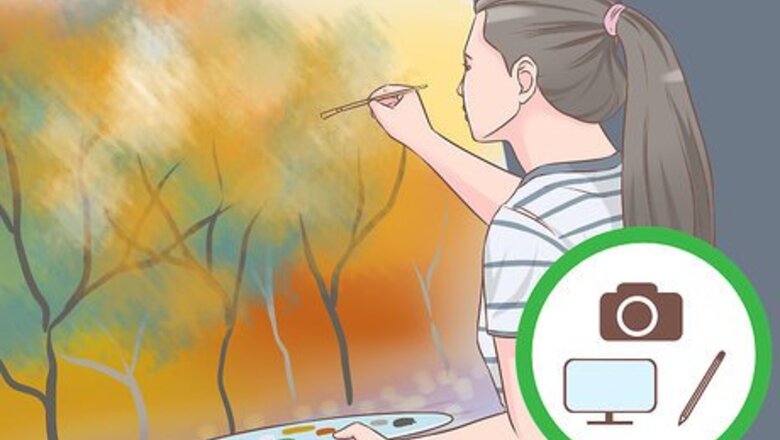
views
Training to Become a Graphic Designer

Take as many art and computer classes in school as you can. Take drawing, painting, photography, and printing classes in high school. Also take computer classes like computer graphics, web design, and language programming classes. These classes will provide you with a strong foundation to begin your graphic design career.
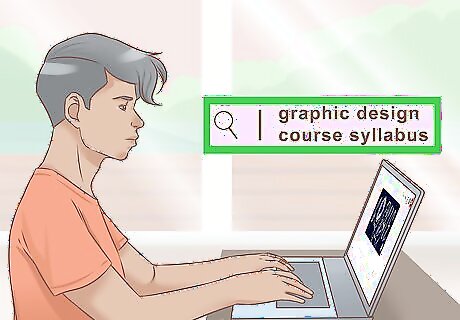
Study graphic design on your own. Type "graphic design course syllabus" in your search engine on the Internet. Download two to three syllabi of college or university professors. Review the student learning objectives and the textbooks used to meet these objectives. Pick and purchase the textbooks you would like to use. Set aside an hour each day to read and take notes. To learn the necessary computer skills to become a graphic designer, watch online tutorials on YouTube, Hack Design, Tuts+ Design and Illustration Guides, and other websites. While this approach to becoming a graphic designer is cost effective, having a degree or certificate may give you an advantage when applying for jobs.

Take an introductory course at a local community college. Visit your local community college and ask about the graphic design courses that they offer. The college will give you a list of the courses, as well as the pricing for the courses. You can also take online introductory courses. See if the college offers any training certificates for graphic designers. An introductory course will provide you with a basic understanding of theory and the elements of design such as color, layout, and typography.
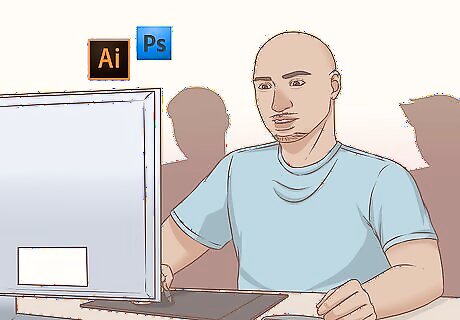
Get an associate’s degree in graphic design. You can obtain an associate's degree from a local community college. By getting an associate’s degree, you will be able to develop and hone your graphic design skills. Associate's degrees typically focus on the use of graphic design software such as Adobe Illustrator and Adobe Photoshop. Knowing how to use these programs is important since a large part of graphic design is done digitally. An associate’s degree typically takes two years to complete.

Obtain a bachelor’s of art in graphic design. A bachelor’s degree typically takes four years to complete. Throughout the program, you will learn all the necessary computer skills and information to be a successful graphic designer. You will also be able to specialize your skills if you obtain a bachelor’s degree. Areas of specialization in graphic design include typography, book design, web design, logo design, branding and advertising, product packaging, desktop publishing, print or web production, and user experience design. Having a bachelor’s degree will give you an edge over other candidates when applying for jobs.

Take additional drawing, writing, and business classes. The ability to draw and write are useful skills for any graphic designer. Additionally, learn how to market your skills as a graphic designer by taking a communications or marketing class. If you plan to be a freelance graphic designer, then take a few entrepreneurial business classes as well. Take these classes as a part of your associate's or bachelor's degree. You can also take these classes on a course-by-course basis at a community college.
Obtaining Work Experience
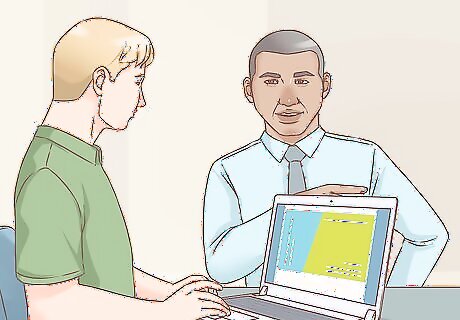
Volunteer your services at a local charity or non-profit. Volunteering to edit or create logos, banners, prints, and other graphic materials for charities is a great way to get some real-world experience while you are in high school or college. Contact charities and non-profit organizations in your area. See if they would like to update their logo, or if they are in need of any other design work. Volunteer your services once you are familiar with Adobe Illustrator and Photoshop.

Apply for an internship while in high school or college. Use the Internet to seek out ad or marketing agencies. Look into local agencies as well as big name agencies. Call or email them to see if they offer internships. If they do, make sure to inquire about the qualifications. Apply for both paid and unpaid internships that you qualify for. For example, "Good Morning. I would like to know if your company offers internships in graphic design. If so, I would like to apply. Please let me know who I should forward my resume to. Thank you."

Join a local graphic design community. Search for graphic design communities online or at a local college or university. Once you join, start networking with its members. Let the members know that you are looking for work to expand your portfolio. Someone may be able to get you in touch with a recruiter. Be aware that some communities may require their members to pay dues.

Tell your friends and family members that you are looking for a job. Let them know that you are looking for an internship or an entry-level position. Send them a copy of your resume and a link to your portfolio or social media account. This way, they will be able to refer your information to potential employers easily. Also let your classmates and social media contacts know that you are looking for opportunities to expand your portfolio.
Creating a Portfolio
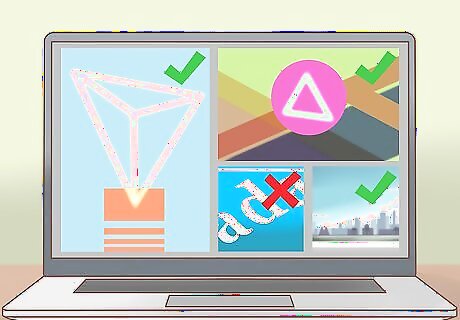
Pick your best pieces of work. Avoid including everything you have ever created. Instead, pick the pieces you are most proud of. These pieces should demonstrate your abilities and showcase your confidence in your work. Include self-initiated work, as well as work you have done for specific clients.
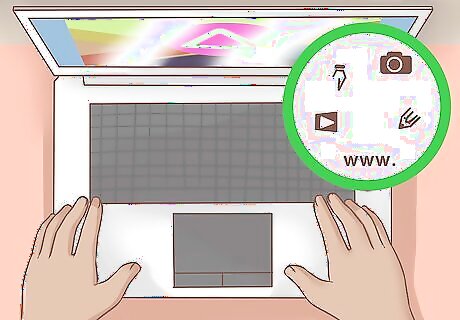
Include a variety of examples. Pick pieces that showcase your range of skills. Include pieces that showcase your typography, web design, and logo design skills, for example. Pick pieces that demonstrate that you have worked for a variety of clients as well.

Contextualize your work. For each piece of work, write one to two paragraphs explaining the client’s goals and how your design met those goals. Talk about your inspiration for the design and your creative process. Additionally, make sure to include any information about the success of your design. Type the information up in a Word document. For example, mention that the client was pleased with your work and contracted you to do more, or talk about how your design increased sales activity for your client.

List any additional work skills. Create a resume page in your portfolio showcasing your skills, as well as your relevant work experience. This could be the first or last page in your portfolio, depending on how you organize it. Make sure to note your ability to meet deadlines, communicate effectively, work with team members, and other important job skills. Make sure to list any degrees or certificates that you have on this page as well.

Create a website for your work. Use a hosted portfolio or a hosted business website like Carbonmade, Dunked, WordPress, Weebly, SquareSpace, or Portfolio Box to create a website for your work. Alternatively, use a self-hosted website. If you are starting out, use a hosted-portfolio site to build your website. This way you don't have to deal with building your website from the ground up. A website showcasing your best work is a great way to make browsing your work simple and engaging.
Working as a Graphic Designer
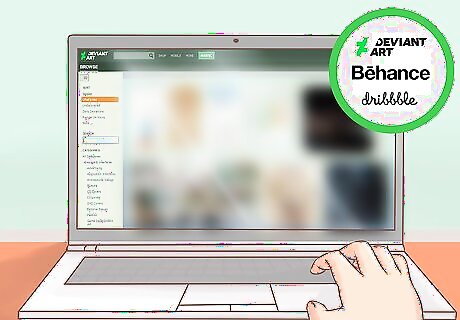
Promote your work through online communities. Sign up to be a member of an online design community. Create a profile and publish your best works on the website. This is a great way to receive feedback and improve on your work. Examples of well-known online communities are DeviantArt, Behance, and Dribble.
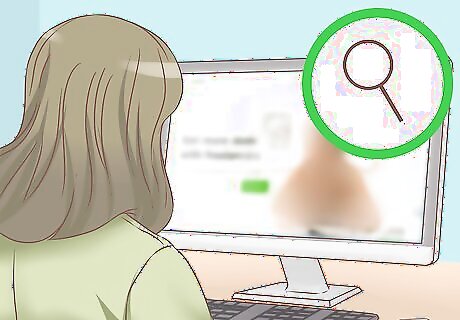
Do freelance work. If you want to be a freelancer, be prepared to find your own work. Submit your portfolio to local marketing and ad agencies who work with freelancers. Make sure to follow up with your clients if you do not hear back from them for more than a week. As a freelancer you will need to be able to do your own marketing, billing, and accounting in addition to being a graphic designer. Always invoice promptly as a freelancer. The longer you wait, the more details you'll need to put on the invoice.

Use social media outlets to find new clients. Create an Instagram or Facebook account specifically for your work. Publish your best pieces of work on these sites. Also post a link to your website so clients can quickly view your portfolio and resume if they are interested in your services. Start by adding your friends, family members, colleagues, and coworkers as friends. Encourage them to share your work with their followers.

Work for a design firm. Browse the websites of graphic design firms, or use job search sites like LinkedIn or Indeed to find openings. Choose entry-level jobs that you qualify for. Look for assistant jobs, or for jobs where you will be a part of a team. Submit your portfolio online or in person for positions that you qualify for. You typically need 1 to 2 years of experience and knowledge of basic graphic design skills to qualify for entry-level positions.
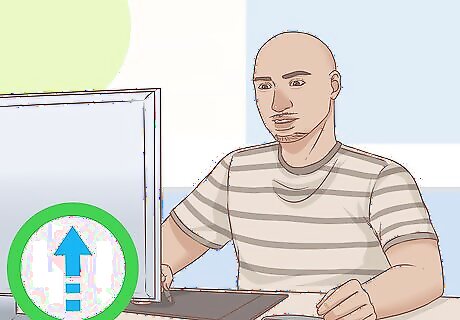
Advance to a higher position at the firm. As you work at the firm, make sure to improve your technical skills. However, as you improve your technical skills, work on your leadership skills, as well as your ability to get things done. Take on extra work, mentor others, volunteer to lead projects, and meet important deadlines. These are great ways to get recognized as a hard worker who is capable of more responsibilities




















Comments
0 comment